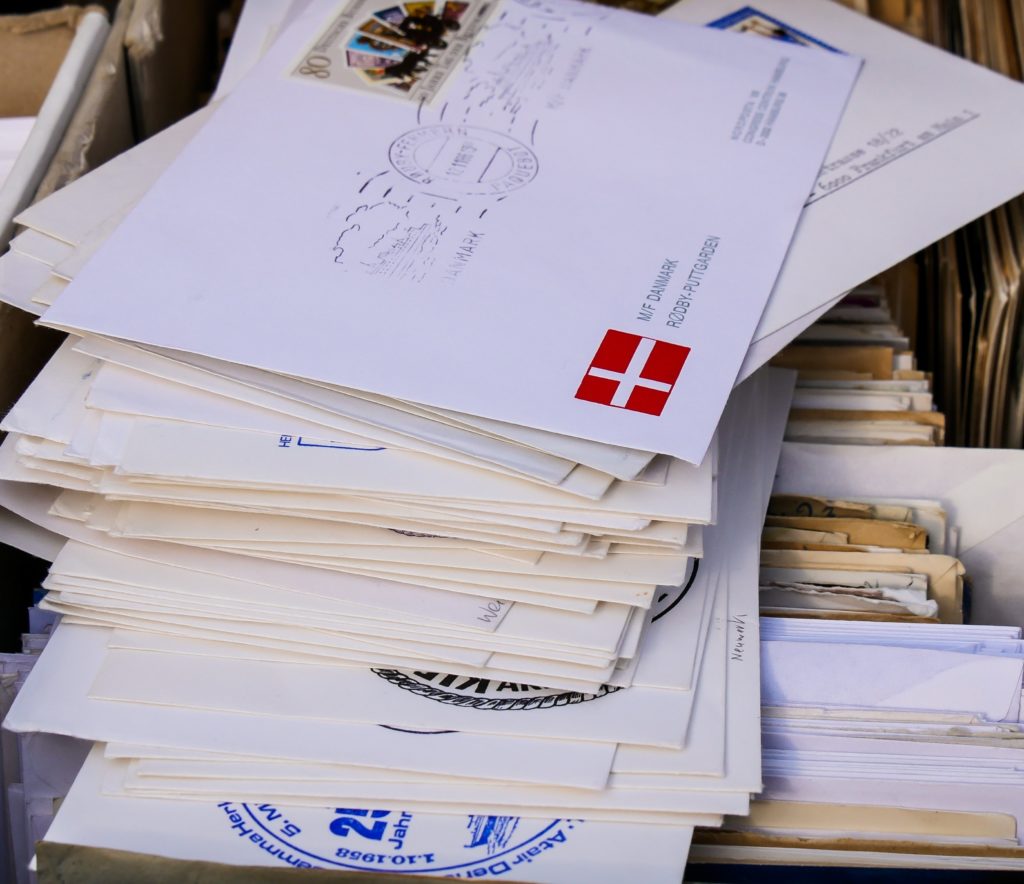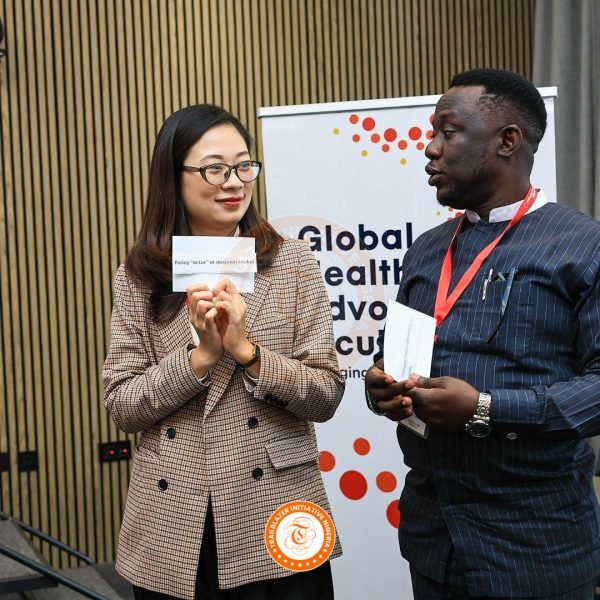A lot has been written about donor acquisition, donor retention, and donor upgrading in nonprofit circles and on various nonprofit blogs.
This large magnitude of available tips and how-tos makes sense since nonprofits, by their nature, depend on donors to deliver their mission and keep their doors open.
Donor acquisition is a process of acquiring new or potential donors to your nonprofit by using a modern approach such as segmenting, building relationships, marketing, traditional fundraising, networking, etc.
It can sometimes be difficult to navigate in this sea of information, which is why we’ve compiled a list of the best techniques to acquire donors. While these techniques will surely help you in donor acquisition, we also have a Donorbox webinar through which you can learn to find out what your potential donors want, how to acquire and retain them, and eventually, how to supercharge donor growth right from a nonprofit expert.
Here are our top picks to boost donor acquisition and online fundraising results:
1. Understand Your Donors
When you have a better understanding of your donors and what is important to them, you can connect to them in a meaningful and relevant way.
To simplify this process, many organizations choose to create donor profiles or donor personas to help them visualize typical supporters. A donor persona is a representation of a typical donor that incorporates their demographic information, goals, passions, and their preferred communication style.
To understand your donors:
– Think about your donors’ demographics.
Where are they located? What’s their average age?
– Think about their preferences.
What’s the best way to reach them? Which of your supporters prefers to donate online? Which of them are recurring donors? How do they like to be addressed? What’s their communication style?
– Think about their behaviors and interests.
What do they care about? What drives them and motivates them?
Once you’ve created your donor personas, share them with your entire team. It is important to now use these when acquiring new donors.
Always have them in mind when releasing any kind of communication to your donors.
Consider editing these personas along the way, especially when you get more data or grow your donor base.
2. Segment Your Donors
Donor segmentation is the process of categorizing donors based on similar characteristics such as demographics and interests.
Donor segmentation can look similar to building donor personas, but it doesn’t have to. You can segment your donors according to a variety of characteristics, depending on your nonprofit’s mission and size:
- How did you acquire them?
- Gift size
- Engagement level
- Frequency of giving
- Preferred ways to give
- Preferred communication methods etc.
In the ideal world, nonprofit fundraising professionals would be able to personalize marketing efforts. However, individualizing marketing per donor is an impossible task.
What is possible instead for most nonprofits is to make marketing feel personal. The right segmentation strategy can help you achieve that.
3. Build Relationships With Your Donors
Building relationships with donors isn’t something you do only for donor retention. Although relationship building with donors is the basic tenant of donor retention, a donor relationship starts from the very first interaction.
Your systematic cultivation of prospective donors should aim to move people from the outer circle into the middle circle, and from the middle to the inner circle.
When it comes to donor acquisition, building relationships with donors really comes down to empathy.
Empathy means doing your best to understand your donors, prospective and current, and getting inside their heads.
Becoming a donor-centric organization is a pivotal step your nonprofit needs to take in order to boost donor acquisition and online fundraising results.
Stewardship is not only about sending out ‘thank you’ cards and e-mail newsletters. It’s about connecting with your supporters around the cause you’re all passionate about – which is usually your mission.
Furthermore, open a conversation with the prospective donor to learn about their values, current situation, and future philanthropic goals. It’s not about what you want them to do; it’s about what they hope to get. Asking questions designed to get to know the supporter is of utmost importance to build relationships and acquire donors.
Finally, happy donors attract other donors. Unhappy donors leave.
4. Set Goals
Almost every, if not every, nonprofit wants to acquire new donors. However, simply saying “We want more donors” doesn’t suffice as a strategy.
To successfully acquire new donors, your nonprofit needs to set donor acquisition goals.
So, how do you know which goals to set for your own organization?
This will vary significantly from one nonprofit to another, however, a good step to take first is to pull data from the past 5 years and take a look at your donor acquisition and donor retention from the past.
Additionally, pull out the goals of your organization for the next year (and 3 and 5), as well as any mission and vision statements.
Look at how many donors you need to acquire and how much money you need to raise this year to progress towards your mission, and balance that out with results from the past.
Goals can be as simple as “we want to improve acquisition conversion rates by 10%, retention rates by 15%, and upgrade rates by 20%.” Make sure to set a timeline for these goals.
Of course, goal setting can get more advanced. You can start targeting not just a quantity of donors but a certain quality as well. An advanced goal could be gaining a smaller number of new recurring donors rather than a larger number of one-time donors because, in the long-term, they are more valuable to your organization.
5. Measure and Evaluate
Goals set a benchmark for your nonprofit. After setting goals and implementing relevant strategies for goal achievement, it’s incredibly important to measure and evaluate the success of your strategies and activities.
As you put your strategies into practice, create metrics (KPIs) related to your goals. These metrics should be key indicators of goal achievement and can be either quantitative, qualitative, or both. They are how you’re going to know whether you accomplished your goals or not.
Based on the timeline you created when you created your goals, consistently measure and evaluate your progress.
Doing this tells you whether your strategies are the right ones for the goals you’re trying to achieve.
If not, don’t panic – this is what the next step is for.
6. Continuously Improve
After measuring and benchmarking your donor acquisition strategies against your goals, it is important to continuously improve.
Implementing changes based on the results of your evaluation is one of the most essential practices you need to implement in your nonprofit if you want to acquire donors and reach your fundraising goals.
Evaluation often happens after the timeline of activities is complete, but it can be very helpful to measure and evaluate what worked and what didn’t work in real-time.
Use whatever information you gather to make changes to your goals, timeline, and strategies.
By continuously improving (and implementing feedback), you’ll stay up to date with fundraising trends, acquire donors, and build trust and credibility.
7. Become a Social Media Star
In today’s day and age, your organization might as well not even exist if it’s not present on main social media networks like Facebook, Twitter, or Instagram.
While donor conversion on Facebook and Twitter is only 3 percent to 6 percent, social media allows your nonprofit to interact with your supporters, build up your brand image, increase exposure, and get donors to sign up for your e-mail list.
When it comes to creating a social media strategy, it’s important to note that, although it looks like it, social media isn’t free. There is the cost of staff time and resources, which takes away from other aspects of fundraising and the organization.
What social media does, in a way that no other communication channel can, is that it has a multiplier effect when your supporters help you out.
More than ever, millennials and Gen Z seek out information about which nonprofits to donate to on social media. Although these young generations still do not make the biggest donations, their impact and donor value is increasing every day.
8. Master the E-mail
E-mail marketing has been chastised for being a thing of the past, but study after study puts email marketing as the most effective way for nonprofits to build awareness, acquire leads, convert supporters, and retain current donors.
This is because e-mail subscribers are generally individuals who have a higher degree of interest in what your nonprofit does (compared to social media followers).
E-mail marketing is free (or very affordable), and e-mails are easy to send, quick to deliver results, and increase brand visibility.
9. Showcase Your Impact
You cannot showcase your impact without measuring it first. And although often a difficult and daunting task, measuring social impact matters. This is especially the case for nonprofits due to their often limited resources. Furthermore, measuring social impact includes measuring complex concepts, such as “increase in the self-esteem of an individual” or “increase in overall well-being”.
Measuring and evaluating social impact is long-term and requires consistent and dedicated work throughout the span of several years, and it requires a relevant system/framework and robust tools.
However, nonprofits need to develop the ability to know whether they’re making a difference. This way, you can work to improve your programs and services and better deliver your mission.
By measuring impact, you gather data and stories that you can then use in your marketing and communications. Showcase these quantitative and qualitative data prominently on your website and other communication channels. This helps build credibility with your supporters and attracts new donors.
Root Cause conducted a study on the giving process and the psychology behind donor motivation. The results showed that 75 percent of respondents look for concrete information about a nonprofit’s achievements before making a decision about where to give. This is especially the case with younger generations.
Successful nonprofits feature their impact front and center on their websites, letting their actions speak for them.
10. Explore Peer-to-Peer Fundraising
Peer-to-peer fundraising is a crowdfunding strategy that makes use of your donors’ existing networks. It encourages supporters to reach out to their peers, friends, coworkers, and family members for donations.
With peer-to-peer fundraising, individual fundraisers usually set up a personal fundraising page to accept donations, which your nonprofit then receives.
Peer-to-peer fundraising is one of the best donor acquisition strategies since it allows your nonprofit to reach a pool of supporters that would have otherwise been inaccessible.
So, why does peer-to-peer fundraising work so well to attract new donors?
Firstly, it builds on relationships and utilizes your already existing donor base. Secondly, it’s cost-effective since your supporters and evangelists fundraise on your behalf.
Your fundraisers give their own voice to your mission, explaining to their networks why your cause matters to them. This personalizes the fundraising and helps build social proof. We are more likely to trust a publication when it was made by a friend or a family member, and this increased trust can help acquire many more donors and much faster than if you made the same appeal.
Peer-to-peer fundraising also works well because it’s exponential. All the individual campaigns by your supporters ripple outwards and bring you exponentially more donors.
11. Don’t Dismiss Traditional Fundraising
While online fundraising grows day by day, and more and more individuals seek information online, don’t be quick to dismiss traditional fundraising.
The best results are usually seen when you combine traditional and modern fundraising techniques.
Here are the three most common techniques considered to be traditional:
- Direct Mail: Still very much used by nonprofits since it can be low-cost and effective. Particularly useful for local nonprofits. Additionally, older donors are more likely to prefer direct mail than younger donors. If your nonprofit has an older donor pool will find direct mail highly effective.
- Events: Events have served as effective fundraising tools for many years. They provide a venue by which donors and potential donors can personally interact and learn about the organization. Events can boost your online fundraising too. Donors are more likely to give if they can put names to faces.
- Door-to-door: Although door-to-door fundraising has diminished over the years due to its resource-intensive nature. However, many organizations successfully utilize them, especially political organizations.
- Phone Solicitations: Phone solicitations are donation requests done over the phone, ranging from one employee making a couple of ‘thank you’ calls to large telemarketing campaigns.
Naturally, when designing your fundraising strategy and deciding on the ratio between modern and traditional fundraising techniques that you will deploy, it’s crucial to know your donor database inside and out.
Diversifying channels is important, but it can be hard to strike a balance between that and spreading out too thin and wasting valuable resources.
In the end, the most important aspect to look at with any fundraising method is ROI (return on investment). The higher costs may be worth it for the revenue they are bringing in. So, whether you choose traditional or modern methods all depends on their ROI.
12. Perfect Your Donation Page
Online giving grew by 12.1% over the past year and has seen consistent year-over-year growth.
A donation page, alongside a good fundraising system, is the single most important thing you need to invest in if you want to acquire donors online.
Make sure the experience a prospect has on your website is user-friendly and smooth.
Furthermore, don’t hide your donation button! A donor should be able to find your donation link within a couple of seconds of your donation page loading. A good case practice is to place the link on the top navigation found in the website’s header. Highlight this button/link, potentially by using a bright and eye-catching color.
Design your donation page so as to be consistent with the rest of the website.
It is also crucial to design a donation page that is mobile-friendly/responsive. This means the donation page will resize according to the device being used, allowing for optimal viewing.
Keep the donation page to one page, keep it simple and clear, with a call to action displayed front and central. Use powerful images and offer multiple payment options.
Improving your donation page is probably the single biggest bang-for-buck improvement you can make to your website and the most effective way to boost your fundraising efforts.
13. Use Storytelling
We are hardwired to listen to and get captivated by stories. Stories, told orally, was one of the first forms of human communication, and, in large part, were used to learn from one another’s experiences.
The most successful nonprofits today use stories all the time: on their websites, in their newsletters, on their social media, and wherever else they have the opportunity.
To tell stories try to use as many different channels as possible, stay genuine and authentic, be clear and succinct, and understand the messages you want to convey.
Get familiar with the basic structure of stories (beginning, middle, end) and the basics of building characters.
Plan your storytelling and develop a system for collecting stories.
Storytelling is an incredible tool for grabbing attention and acquiring donors!
14. Be Mindful of the Acquisition Cost
Donor acquisition cost is the price you pay to convince a potential donor to make a gift to your organization.
You can think of this as simply all the expenses that are attributable to acquiring a new donor. This can include expenses to third-party vendors, postage, staff salaries, and other fundraising-related costs.
Research at fundraisingreportcard.com (and this is mainly empirical and experience-based), if you are a small nonprofit (less than 5 staff or small revenues), you are better off calculating your DAC without including salaries or overhead costs. If you are a large nonprofit (larger staff, larger revenues) you should calculate DAC both ways, with and without salaries and overhead costs.
It’s very important for nonprofits to stay mindful of the donor acquisition cost as they implement various fundraising strategies.
This is because when you acquire a donor you want to know not only which channel they came through, but also what the expense was to acquire them. That way, when you calculate your donor lifetime value, you’ll be able to determine which fundraising activities are worth investing more in and which are worth moving away from.
15. Don’t Forget About Acquired Donors
As a nonprofit professional, you’re probably well aware of the advantages of thanking your donors and showing them your appreciation when they donate to or volunteer for your cause.
When a supporter donates, it’s important for your nonprofit to acknowledge that. Send them a thank you letter via e-mail or direct mail, depending on your size and audience. This lets donors know that you appreciate their act of giving.
When donors see that your organization appreciates their gift, they are more likely to donate again and let their friends and acquaintances know about your nonprofit too.
Send your donors frequent updates about the “status” of their donation, helping them relive the good feelings all over again.
Conclusion
Acquiring donors isn’t as simple as it sometimes seems. Generating positive impressions and progressing towards fundraising goals can be difficult, especially when the pressure is high and deadlines tight.
The core of donor acquisition is about understanding your audience, sending out a convincing message, providing value, and building a donor-focused approach.
Building upon this you can develop strategies or a mix of strategies and tactics – whether that’s direct mailing or creating viral videos.
Remember that, to acquire donors, you need to ensure their donations are processed smoothly and efficiently – so don’t forget about a donation management system!
















